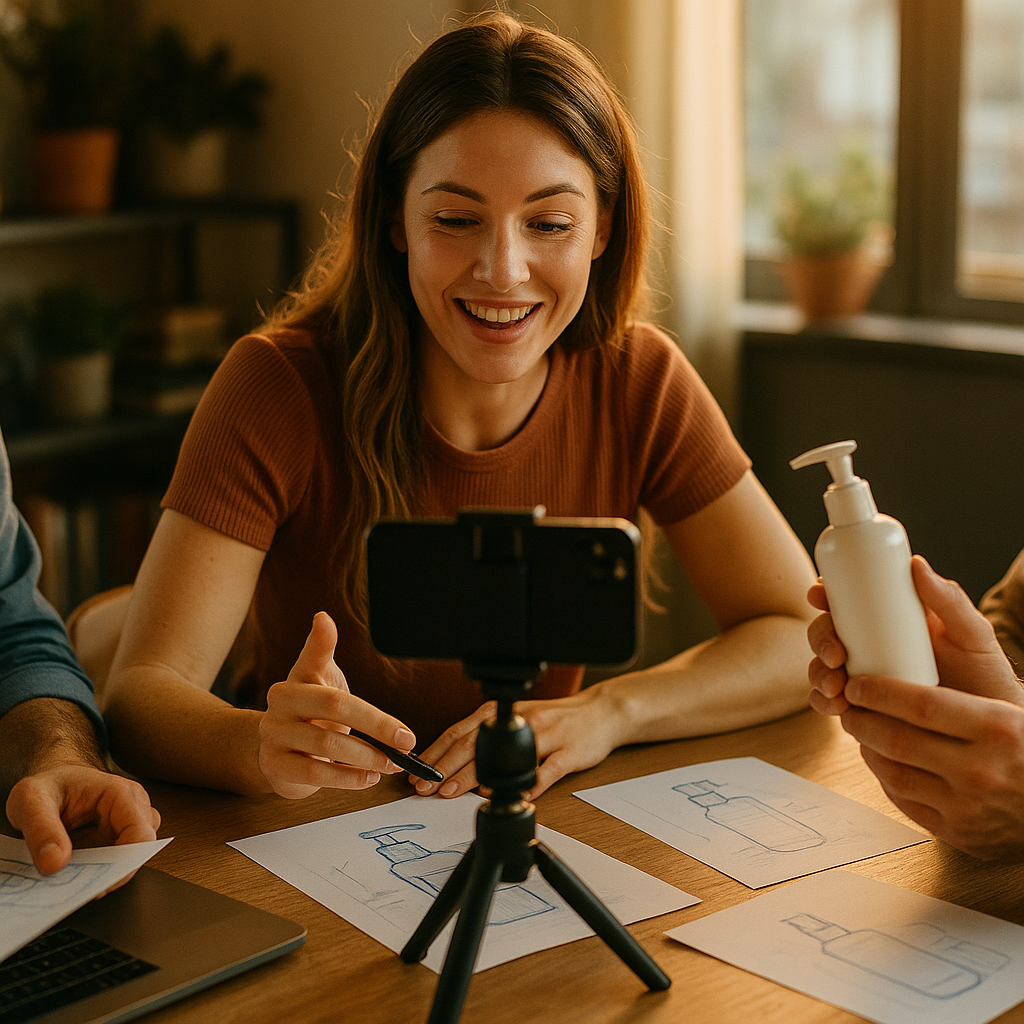Influencer-led product development and co-creation strategies have transformed how brands bring new offerings to market in 2025. By involving influential voices and communities throughout the product lifecycle, companies foster deeper trust and relevance. What does real collaboration with influencers look like, and how can brands unlock its full potential? Discover proven strategies below.
Why Influencer-Led Product Development Drives Results
Influencer-led product development puts credibility and community at the heart of innovation. In 2025, 64% of Gen Z and Millennials trust creator-endorsed products over traditional advertisements (Source: Edelman Trust Barometer 2025). By collaborating directly with influencers—those respected in niche communities or across broader categories—brands unlock:
- Authentic feedback: Influencers pinpoint shifting consumer needs faster than internal teams can.
- Built-in demand: Their loyal followers amplify early product traction.
- Social proof: Endorsements from creators who co-designed features or aesthetics validate a launch.
Brands that prioritize these strategies outperform competitors on both speed to market and relevance, especially in saturated industries like beauty, fashion, and tech.
Co-Creation with Influencers: Real Engagement, Not Just Endorsement
Co-creation strategies ensure influencers collaborate much deeper than a post-launch endorsement. This approach invites them into the earliest stages—ideation, R&D, and beta testing—bridging the gap between consumer expectations and supply. In practice, influencer co-creation often includes:
- Collaborative brainstorming sessions (live or virtual) to surface unaddressed consumer pain points.
- A/B testing prototypes with influencer communities for genuine feedback on form, function, and value.
- Co-designed limited edition products, allowing influencers to curate packaging, naming, and positioning.
By empowering influencers as creative partners, brands move beyond transactional partnerships and forge authentic alliances that elevate both product and perception in the market.
Best Practices: Selecting the Right Influencers for Product Development
Success hinges on finding the right collaborators—not simply those with vast followings, but creators who match your ethos and audience goals. Consider the following best practices, rooted in EEAT (Experience, Expertise, Authoritativeness, Trustworthiness):
- Alignment with brand values: Prioritize influencers who already use and love similar products, ensuring natural synergy.
- Authenticity and expertise: Select influencers actively engaged in your niche and known for honest reviews.
- Community influence: Micro and nano influencers often yield higher engagement rates and deeper community impact.
- Data-driven insight: Analyze past campaign performance, engagement metrics, and sentiment—don’t rely solely on follower counts.
Establishing mutual goals and transparent communication from day one is essential to foster trust and avoid misalignment during critical development phases.
Leveraging Technology for Seamless Co-Creation Outcomes
Modern co-creation relies heavily on digital collaboration tools and analytics to maximize ROI. In 2025, top brands employ advanced platforms that facilitate:
- Real-time feedback loops: Interactive product mockups and closed beta tests shared through secure cloud environments.
- AI-powered sentiment analysis: Automated tracking of influencer and follower feedback to catch issues before launch.
- Transparent progress tracking: Dashboards allow both brand and influencer to monitor timelines and milestones.
These technologies minimize misunderstandings, accelerate iteration cycles, and ensure that community-driven insights directly inform each product milestone.
Case Studies: Influencer Co-Creation That Won in 2025
Leading-edge brands have set new standards for influencer product development. Recent standouts include:
- Clean Beauty Launch: An indie skincare brand partnered with five ingredient-conscious beauty creators. Together, they formulated, tested, and co-launched a vegan cleanser that sold out within two weeks—driven by pre-order campaigns across influencer social feeds.
- Gaming Tech Partnership: A global gaming hardware company enlisted eSports influencers to design a pro-grade mouse. Ongoing live streams documented tweaks during prototyping, boosting transparency and building anticipation. Post-launch, customer feedback cited the influencers’ involvement as a key driver of purchase.
These examples illustrate how moving beyond perfunctory influencer campaigns to true co-creation can result in products that resonate strongly with engaged communities—and achieve rapid commercial success.
Measuring Success: KPIs for Influencer-Led Product Development
Tracking the efficacy of influencer co-creation strategies is crucial for continuous improvement and stakeholder buy-in. Key performance indicators (KPIs) in 2025 center on both qualitative and quantitative results:
- Pre-launch waitlist and pre-orders generated through influencer campaigns
- Social sentiment and share of positive mentions during beta and at launch
- Conversion rates from influencer codes/links compared to traditional marketing
- User-generated content (UGC) volume linked to the co-created product
- Product return and satisfaction rates, influenced by how closely the final offering matched influencer/community feedback
Continuous monitoring and willingness to iterate based on real data are integral to sustaining long-term advantages from influencer-led innovation.
Conclusion: The Future of Brand Innovation Lies in Co-Creation
In 2025, influencer-led product development and co-creation strategies are essential for brands seeking genuine relevance and trust. Collaboration with the right creators enables faster, more meaningful innovation. The key is building transparent, values-aligned partnerships that prioritize real consumer needs—because today’s customers expect a seat at the table.
Frequently Asked Questions: Influencer-Led Product Development and Co-Creation
-
How do brands find the best influencers for co-creation?
Brands assess alignment in values, expertise, and audience fit, often starting with social listening tools and campaign performance data. Prior collaboration history and demonstrated product knowledge are also strong indicators.
-
What is the difference between influencer endorsement and co-creation?
Endorsement typically involves influencers promoting a finished product. Co-creation is a collaborative process where influencers help ideate, test, and shape the product before launch, resulting in genuinely tailored offerings.
-
How can brands protect proprietary information during co-creation?
Use clear NDAs and robust digital collaboration platforms with permission controls. Choose experienced influencers accustomed to working under confidentiality agreements to safeguard sensitive data.
-
What industries benefit most from influencer co-creation?
Beauty, fashion, technology, food and beverage, and wellness have seen significant success with co-creation, as these markets thrive on community trends, rapid feedback, and social proof.
-
How do brands measure ROI for influencer product collaborations?
KPIs include pre-order volumes, launch sales, cost per acquisition, social sentiment, and user-generated content. Brands that track these metrics alongside traditional marketing benchmarks get the clearest picture of ROI.
